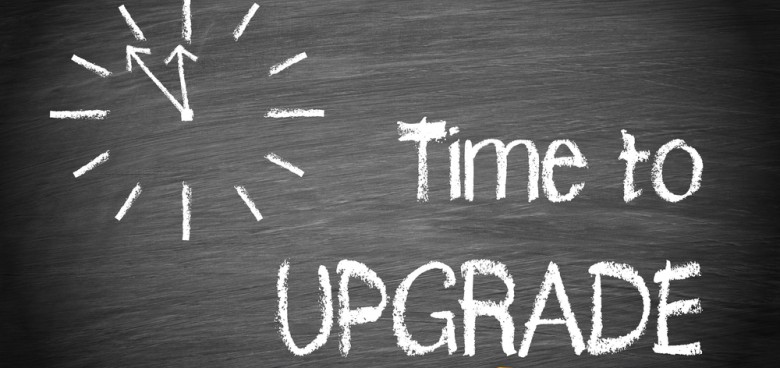How To Upgrade Your Home Coffee Maker
Coffee makers in the home and office have become somewhat of what the Walkman was back in the 90’s; at first, it was a luxury item that was almost always “too expensive”, and one that “served no real purpose”. Using that as our example, and moving along 20+ years, we now see ourselves all walking around with the modern equivalent of the Walkman – either in the form of music on our phones, iPod’s etc.
We can directly translate this to the boom of coffee makers in almost all spaces of late – it all started with a single-serve coffee maker that coffee lovers brought into their homes, to get something in-between an instant cup of coffee and café-quality coffee.
Times have changed, again, and now we’re seeing affordable, pint-sized bean to cup coffee makers taking over that market. Even the single-serve coffee maker we have come to know are progressing at the speed of light – with attachable milk frothers and capsule / pod selections spanning beyond our wildest imagination.
If you’re stuck somewhere between owning a single-serve coffee maker and needing (read: wanting, desperately) a better quality coffee makers, here’s a logical way to go about making exactly the right selection for your needs.
What Type of Coffee Maker Is Best For My Home?
This question/answer is user-specific. However, it’s safe to say that size does matter, especially in this case. Instead of listing the “right” options for home users, let’s first mention what’s never going to be the right choice.
Vending machines and commercial-sized Espresso machines are going to be a waste of all your resources.
-They take up far too much space to justifiably be placed in a kitchen or living room.
-They look bulky.
-In the case of a coffee vending machine, chances are you’ll be compromising quality either by using instant coffee or powdered milk, and a large commercial Espresso machine will simply not be utilised to it’s full potential.
Now that we know what to avoid – what should we be scouring as “minimum requirements” for a home coffee maker? Well, that also depends on the users starting point.
If you are using instant coffee and want to bump it up a level, consider a single-serve coffee maker. This is going to allow you to select different types of coffee, and if it’s a small home usage application, you won’t be putting yourself too out-of-pocket. Some of the more advanced single-serve coffee maker can have a milk frother fitted, allowing you to have creamy cappuccino’s etc. Consider that using a capsule / pod daily may add up financially over time, so keep an eye on that.
If you don’t want the “fanciness” of a single-serve coffee maker and are more of a coffee purist – consider investing in a drip coffee maker. Using an industrial drip coffee maker in your home is the exception to the home/ commercial coffee maker dynamic. See, using an industrial drip coffee maker allows you to brew and maintain the temperature of your filter coffee, without the risk of it scalding. Also, it is usually made of far superior material, meaning less possibility of breakage of damage.
If you are already a single-serve coffee maker owner, and need to upgrade yourself, bean to cup is definitely the machine you’re looking for. You allow yourself the freedom to grind coffee beans on the spot – guaranteeing the freshest possible cup of coffee every single time. Automatic coffee makers also come with a built-in or attachable milk flasks/frothers, granting you the ability to combine freshly-ground beans with freshly foamed milk.
Some coffee companies have incorporated the coffee product into the coffee maker solution, ensuring you have three of the most important factors when you’re renting:
1) Coffee product
2) Backup support (in case anything goes wrong)
3) The flexibility to swap-out op upgrade your machine if it (one day) no longer serves your needs.
How Much Will A Home Coffee Maker Cost Me?
If you’re considering opting for a single-serve coffee maker consider these two factors:
1) Initial investment for the single-serve coffee maker is low
2) You end up paying per cup of coffee by the price of each capsule or pod. That directly translates to the fancier the brand / more expensive the capsule or pod= the higher price per cup of coffee you make.
Also factor in the price for sugar and milk to add to each cup, and you can expect to pay around $ 1.00 – $ 1.50 per cup of coffee.
If you’re opting for a drip coffee maker – factor in the rental or purchase price for the coffee machine, as well as the ground coffee. This is usually the cheapest route – for a reason. Your drink choices are pretty much limited to, well, coffee – or coffee.
If you’re decided to make the move to bean to cup automatic coffee makers for your home, and are considering doing it through a product-subsidised rental, you can pay as little as $ 0.80c per cup.
Considering this is using freshly ground coffee beans as well as fresh milk – it seems to the the most cost-effective solution that yields the best possible coffee at home.
If you’ve opted for the rental route – you’ll also benefit from the backup support the coffee company will usually offer, and get to enjoy the best coffee for as long ass you like.
All I know is that sometimes, the coffee you have in the morning can be the deciding factor in just how great your day is. Take it from an expert 🙂
